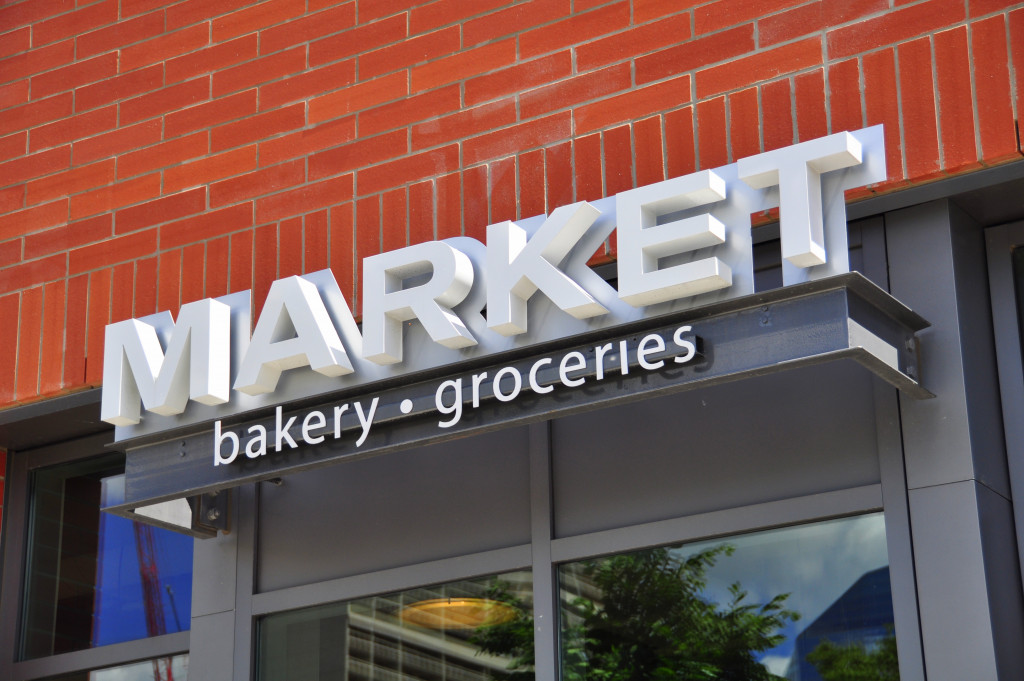- Brick-and-mortar stores attract customers through tangible, sensory shopping experiences, necessitating an attractive store design.
- A store’s layout should prioritize visibility, aesthetics, navigation ease, and adequate space management to enhance customer experience.
- Strategic use of various signage types can guide customers, highlight products and promotions, and reinforce brand identity.
- Incorporating technology into stores can enhance customer engagement, streamline shopping, and provide valuable data for businesses.
Despite the rise of online shopping, many consumers still prefer the tangible shopping experience provided by brick-and-mortar stores. According to a 2019 study by the ICSC, 81% of U.S. consumers prefer to purchase grocery items in-store, and 73% cited trying things or seeing them in person as their top reason for shopping in physical stores. Furthermore, Retail Dive reports that 62% of consumers want to examine and feel items before purchasing. These statistics underscore the enduring allure of physical retail, highlighting consumers’ desire for a sensory, personalized, and immediate shopping experience.
However, it can be challenging to attract people to in-store locations. To make the store attractive, businesses must consider making changes. Here are a few tips to consider for enhancing the in-store experience:
Layout and Design

The layout and design of a retail store play a critical role in attracting customers. Not only does it help showcase the products effectively, but it also impacts how customers navigate the store, influencing their overall shopping experience. Here are a few factors worth considering:
Visibility and Accessibility
A store layout should ensure that all products are easily visible and accessible. This involves thoughtful placement and arrangement of merchandise, ensuring that new or discounted items are in high-traffic areas, and keeping all products within reach.
Aesthetics and Decoration
A well-designed store with appealing aesthetics can attract more customers. Decoration plays a significant role in reflecting the brand’s image and appealing to the target customers. Using suitable colors, lighting, and decorations can create an enticing ambiance for shoppers.
Flow and Navigation
The flow of the store should be easy to navigate, guiding customers effortlessly through different sections. Clear signage, well-labeled aisles, and logical categorization of products can enhance the shopping experience, making it easy for customers to find what they’re looking for.
Space Management
Effective space management can maximize the use of store space while ensuring a comfortable shopping experience for customers. This involves balancing stocking various products and avoiding cluttered displays that overwhelm or frustrate shoppers.
Signage

Signage is an essential component in making a store attractive and navigable. It serves as a silent salesperson, guiding customers through the store and influencing their shopping journey. Clear, attractive signage can pique customers’ interest, drawing them into the store and directing them to the items they seek.
Well-designed signage can highlight promotions, new arrivals, or best-selling products, sparking shopper interest and potentially increasing sales. Moreover, the strategic use of signage can help reinforce brand identity and create a more immersive shopping environment.
Many types of signage can be used in a store, such as window signs, shelf signs, floor graphics, wayfinding, promotional posters, and LED displays. Businesses should consider the purpose of the sign before deciding on its type. High-quality lighted acrylic signages are particularly effective in captivating shoppers and creating an inviting atmosphere. Those signages are also great for advertising special offers, sales, or product showcases, making them ideal investments for your retail store.
Technology
Technology can add convenience and customer engagement to the shopping experience. For instance, digital signage can display relevant information about products or promotions, while interactive touchscreens can help customers identify their desired items more quickly.
Technology can also help businesses gather customer data, such as the items they purchase or the time they spend in-store. This information can be used to improve the customer experience and make better decisions for marketing and product placements.
Incorporating technology into stores can help create a more interactive shopping experience while encouraging customers to explore more products. As such, it is essential to create an attractive in-store environment.
Customer Service
Finally, customer service can be essential in making a retail store attractive. Having attentive staff members to assist customers, answer their questions, or help them find the desired items can make their shopping experience more enjoyable and rewarding. A friendly atmosphere with helpful employees can draw in customers, create loyalty, and encourage repeat visits.
Training your staff will help provide better customer service. Providing them with the necessary product knowledge and teaching them how to communicate effectively can make their customer interactions more successful.
Final Thoughts
Creating a pleasant and inviting customer atmosphere is critical to making a store attractive. Businesses should consider using design, signage, and technology to make their stores more appealing and engaging. With the right strategy, companies can create a unique shopping experience to attract customers and keep them returning.
Additionally, businesses should pay attention to their customer’s feedback and use it to improve the shopping experience. This can involve anything from updating the store layout to providing more useful product information. By listening to what customers say, businesses can continually refine their in-store experience for better results.
